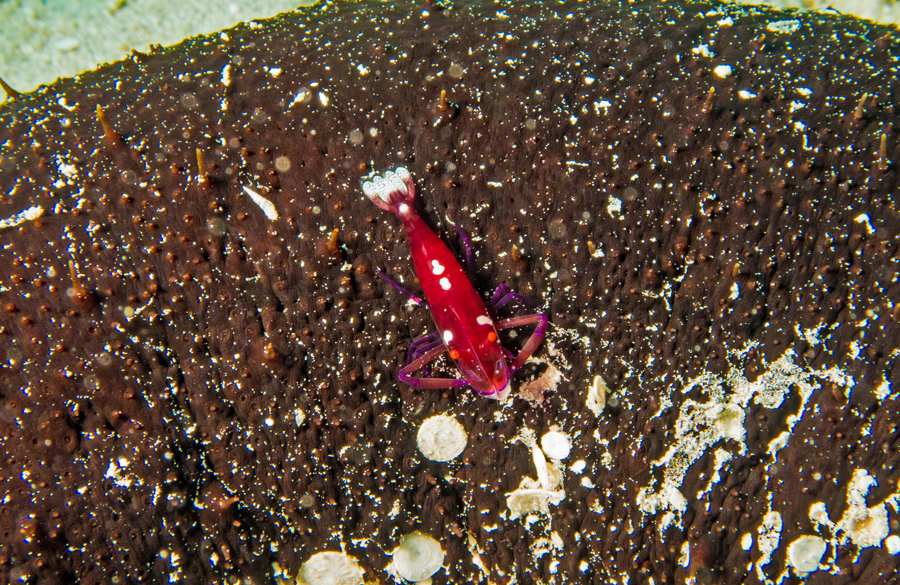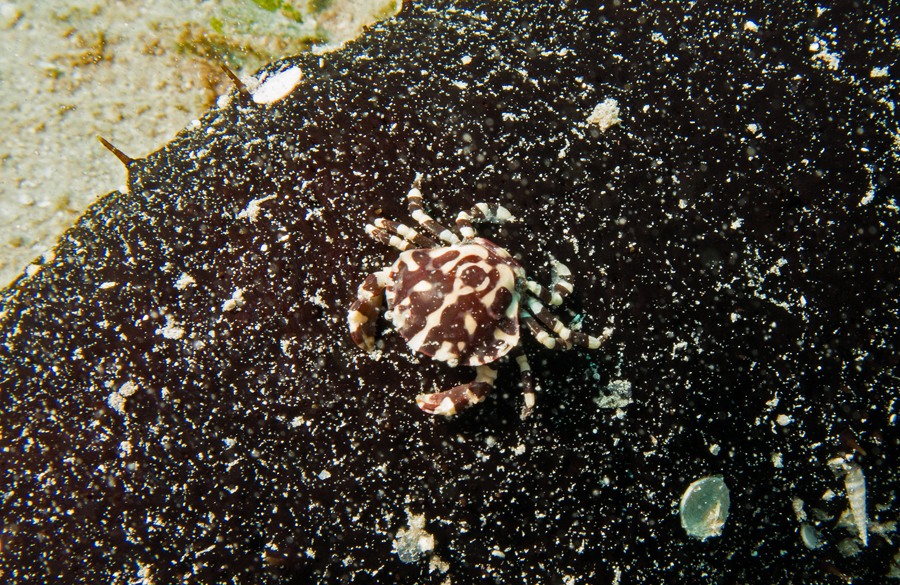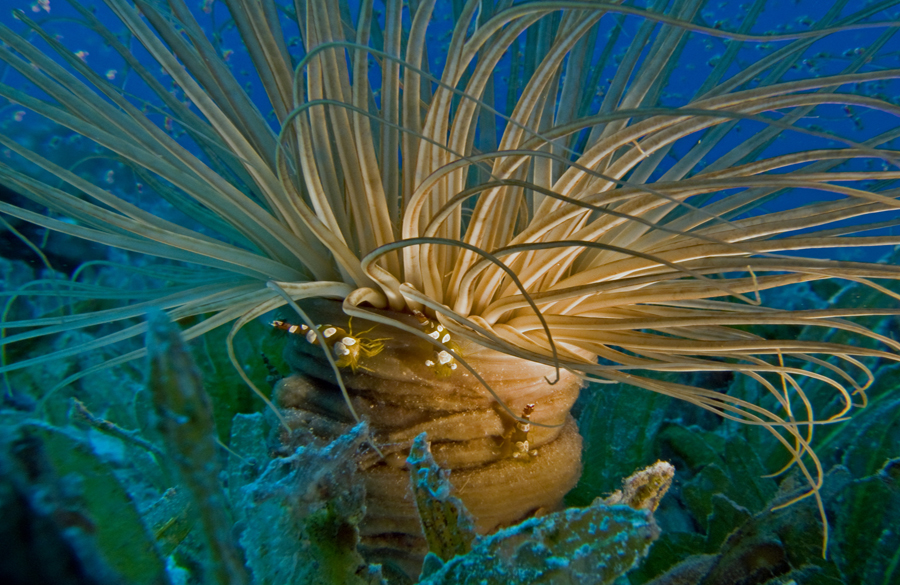KOMMENSALISM
Commensalimus is one of 3 possible types of symbiosis.
Symbiosis refers to a close living community between two different organisms.
The term commensalism (Latin commensalis 'table companion') is used for a form of interaction between individuals of different species that is positive for members of one species and neutral for those of the other species, i.e. one benefits from the other without harming it.
Even if the diver does not know that it is a sympiosis with commensal behavior, he sees this on every dive.
Who doesn't know them, the clownfish together with the anemone.
Divers who open their eyes wider in the truest sense of the word will discover communities of life that few have ever seen before.

We swim past sea cucumbers dozens of times, they are not very photogenic.
It's a shame, because if we took a closer look, there would be much more to see.
The first is the imperator shrimp (Periclimenes imperator). It is very small, a maximum of 2 cm in size and difficult to see because it adapts its body color to that of the host.
In the case of the sea cucumber.

And because we focus our eye on the small one, we discover the Harlequin swimming crab Lisocarcinus orbicularis in the same sea cucumber. It has a smooth, bare dorsal shell with pronounced spots and grows to a maximum size of 4 cm.

More conspicuous to the diver's eye is the cylinder rose Cerianthus sp.
Once you've had your fill of the gracefulness, don't dive any further but take a closer look. You will discover 3 hollow-backed shrimps (Thor amboinensis) that have chosen the cylinder rose as the host for their commensal behavior. The Holkreuz shrimp is a small decapod shrimp from the cleaner shrimp family. It grows to a size of 2.5 cm and has a striking white spot pattern. The abdomen, i.e. the belly region, is usually stretched upwards, giving the impression of a hollow back, which gives it its name.
Photos: Johann Vifian
Sources: Lieske coral reef guide
